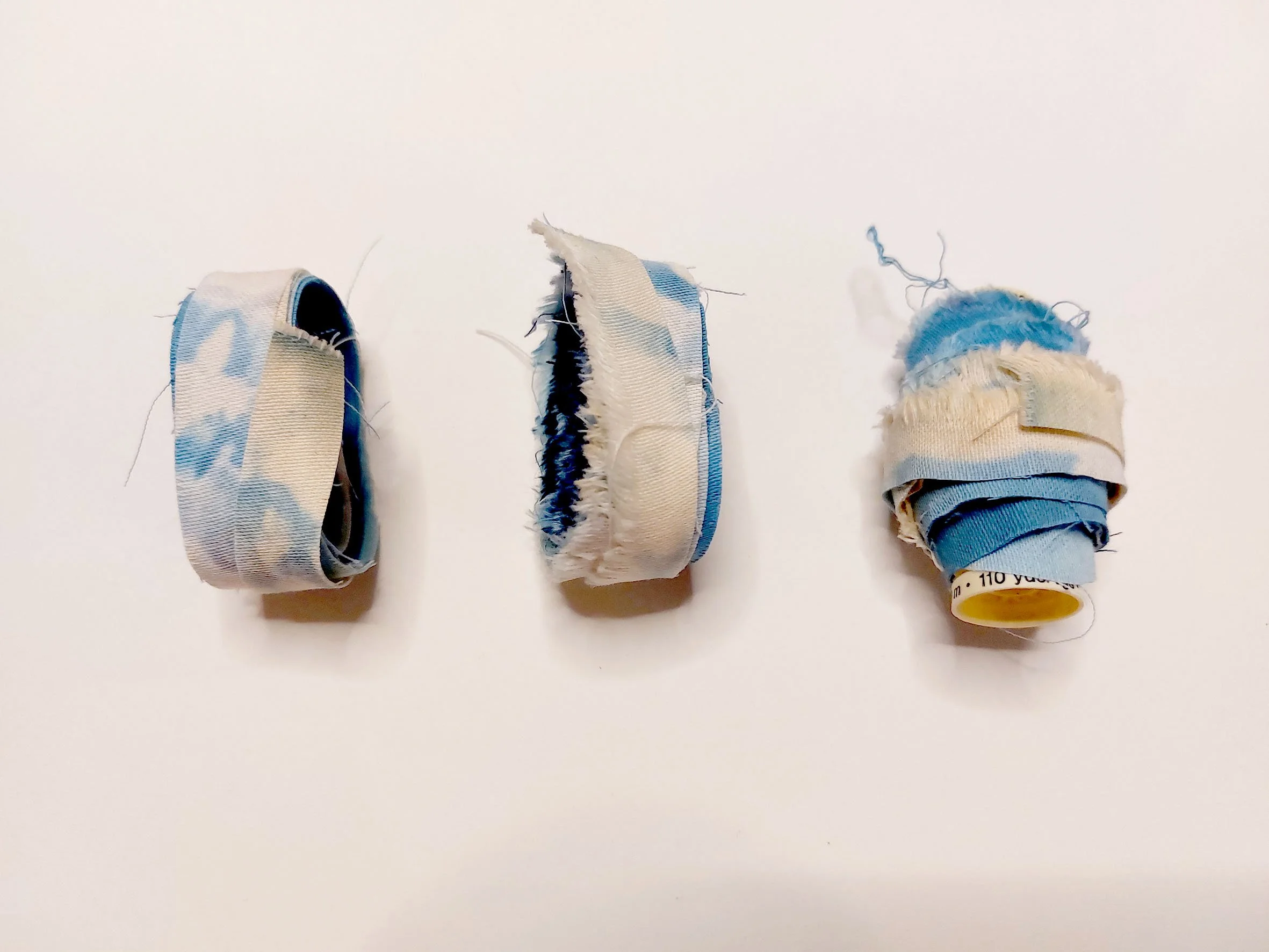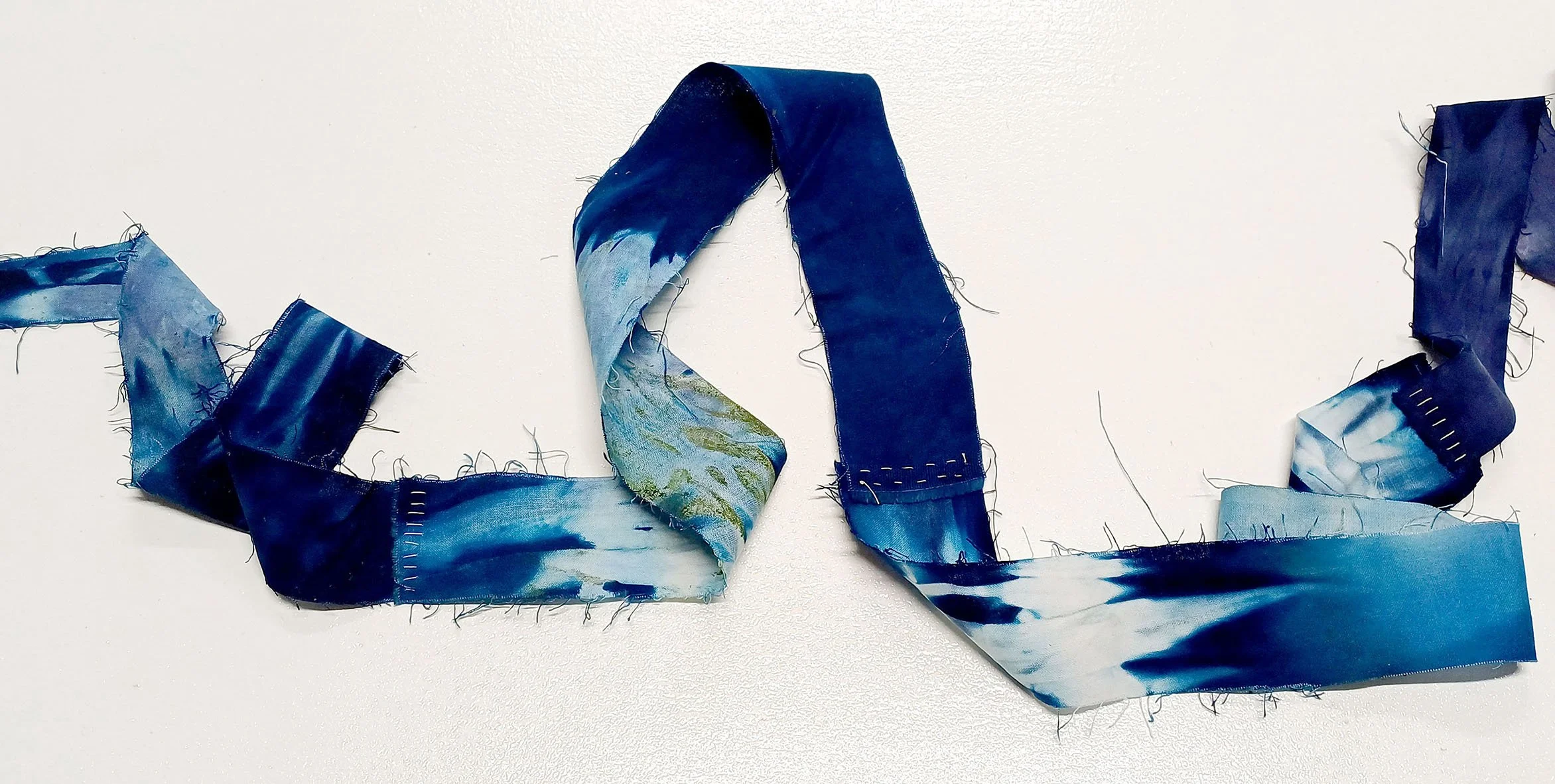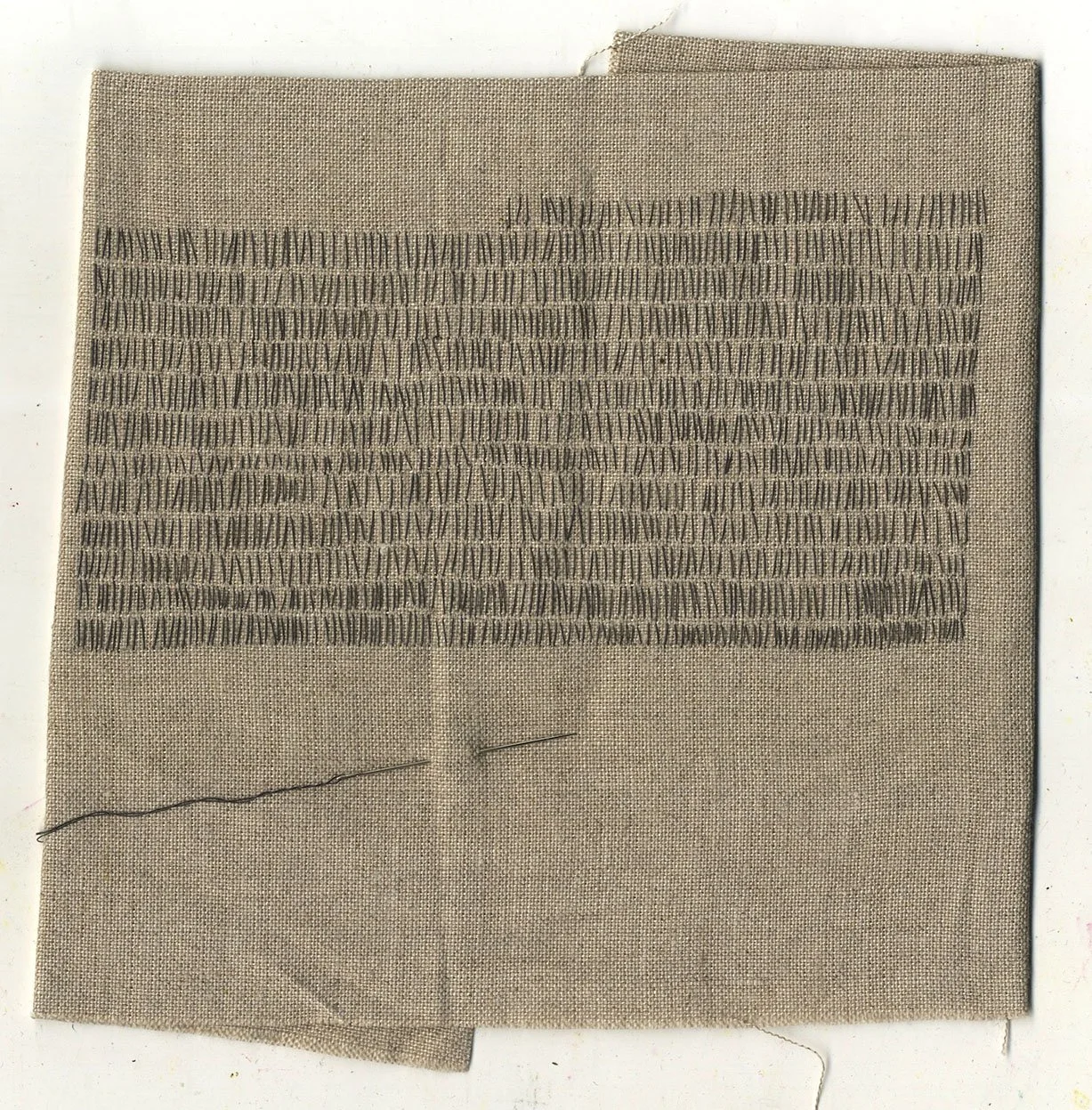Stitchography
Stitchography is a new critical-creative model for practice-led research. It is a term I have coined that draws on the visual metaphor of the thread to define a multi-stranded approach to place-based research. Used as an umbrella term, it knots together seemingly disparate threads of practice through visual-aesthetic and textual outputs to propose new conceptualisations of suburban place. Developed as a multi-disciplinary set of creative approaches that explore, record and re/conceptualise place through a walking-stitching praxis, it centres on three key threads of inquiry; Place as Object, Place as Subject and Place as Agent.
The entangling of theoretical and philosophical perspectives is echoed in the entangling of people that occurred through a series of participatory walking-stitching workshops during the summer of 2023 and a public exhibition in October 2023. The interaction with others that the workshops and exhibition provided contributed to a knotting of ideas and emergent thinking, directing and informing practical understandings of stitchography, and the development of a new stitchographic lexicon. Recognising a textility of writing that enables language to emerge through practice I am able to define terms that reconceptualise place as more than spatial-geographical to consider the material, bodily and sensuous.
Situated specifically within a suburban space, not usually called upon as a site for critical and creative practice, the walking-stitching interventions explored through a stitchographic practice offer opportunities to explore familiar sites in unfamiliar ways. Adopting Milica Muminovic’s sentiment that ‘people are not simply users of place, but are actively involved in its creation through the act of building and experiencing’ (2015, p.299), the solitary and participatory walking-stitching interventions presented here allow for an engagement with overlooked and unconsidered spaces, enabling the walker-stitcher to become actively involved in the creation of a ‘human-more-than-human assemblage’ of place (Bennett, 2010).
Through a stitchographic practice I propose a methodological framework of entanglement that knots together disparate threads of practice-led inquiry. The notion of entanglement is considered through the intersecting and knotting of multiple threads. Merleau-Ponty’s notion of bodily consciousness and sensory experience (1962); Deleuze and Guattari’s model of the rhizome (2021); Karen Barad’s concepts of intra-activity and agential realism (2007); Jane Bennett’s understanding of vibrant matter (2010); and Donna Haraway’s theory of sympoiesis (2016) form the theoretical framework that connects threads of phenomenological reflection and new materialism, two approaches that tend not to be synthesised. My positionality between embodied phenomenological and new materialist perspectives, has enabled me to identify a new stitchographic space for thinking about experiences in, on and with place that makes it possible for me to move between purposive, discursive and conceptual understandings of place.







Key References
Barad, K (2007) Meeting the universe halfway: Quantum physics and the entanglement of matter and meaning. Croydon: Duke University press.
Bennett, J (2010) Vibrant Matter: A political ecology of things. Durham and London: Duke University Press.
Deleuze, G. & Guattari, F. (2021) A Thousand Plateaux: Capitalism and Schizophrenia. London: Bloomsbury Academic.
Haraway, D (2016) Staying with the trouble: Making kin in the Chthulucene. Durham and London: Duke University Press.
Merleau-Ponty, M (1962) Phenomenology of Perception. Translated by: Smith, C. London: Routledge and Kegan Paul.

